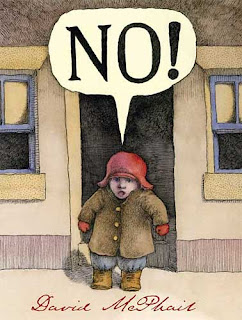Philip and his children, Peter and Ginny, move from the city to Oneida House on the outskirts of the university in Seneca, N.Y. His wife remains in the city and sometimes comes out on weekends. One of Peter's stoner buddies claims the house is haunted, and Peter gradually comes to believe him. He's been having weird (if fun) dreams, and his family is starting to act very strange. (Except for Mom, who barely appears in the story.)
The story jumps back and forth between Peter in the present, and Ellen in the early 70s. Back then, Ellen was a hanger-on of her girlfriend Alex's radical group. (She was really only there because of Alex.) Alex brought in uber-radical "Micrograham" to do something big. After a great deal of drug use and some self-mutilation, this turned out to be bombing the stage at graduation. Ellen told campus security and the plot was foiled. Micrograham then took the other kids out to the middle of the lake and told them to get out and wait for him. Which all except Alex did. Alex, perhaps slightly less stoned than the others, had to be thrown out of the boat. When Peter sees a picture of the group, he realizes that one of the guys looks just like...
This dude Mike that Peter saw in the woods (along with the chicks he had those fun dreams about)! And just like John Humprhey Noyes (real guy -- founder of the Oneida Community). And just like Joseph Smith (also a real guy -- founder of the Church of Jesus Christ of Latter Day Saints). Plus, one of the girls in the picture looks just like the history teacher at the high school, Ellen Bourne, only younger. While Peter and his buddies are talking to Ms. Bourne, Ginny is gathering explosives from Micrograham's hiding place and Dad is getting ready to turn Ginny into a virgin sacrifice. Dad takes Ginny out in the boat, Peter takes his buds and Ellen to the clearing he saw Mike in, and Ellen stays there while Peter and his buds head back to the house, where they see Dad and Ginny out on the water. Peter swims out to save Ginny, Ellen convinces her late friends that they don't have to stay with Mike, the dead kids drag Peter and Ginny underwater, Dad blows up, Peter and Ginny get back to shore and argue about whether to ask Mom to move to Seneca or to go back to the city. The end.
The drug use is heavy in the 70s sections, and Peter and his friends spend a lot of time drinking and occasionally smoking pot. The sex is never graphically described, though it is described and is a major part of the story. Phil with his bathrobe open when Ginny's friends come over also merits description. (Why get dressed for murder?) The references to Joseph Smith were what I personally found most offensive. (I'd not heard of Noyes or the Oneida Community before picking this book up.) Implying that the founder of a major religious movement was essentially a drugged out nut, manipulated by a being whose stated purpose is to cause destruction in the world, ticks me off. It especially ticks me off when it is used as nothing more than a plot device.
For family psychological horror with ghosts, I didn't think it was as good as Stephen King's The Shining (the Smith references really put me off), but it works and it's a lot shorter. Unlike many horror stories featuring children and teens, it doesn't try to be "kid's save the town from unspeakable horror." Peter's not trying to save the world or the town. Just his family.
If you liked this, try:
Bradbury, Ray. Something Wicked This Way Comes. Townspeople start acting all weird when evil circus comes to town. Boy has to save best friend from charismatic ringmaster, saving town just a bonus.
King, Stephen. The Shining. Psychic boy has to save family from haunted hotel, meets with limited success. (Don't judge the book by the Stanley Kubrick film.)
To see Novelist recommendations on spiritual possession, click here.





